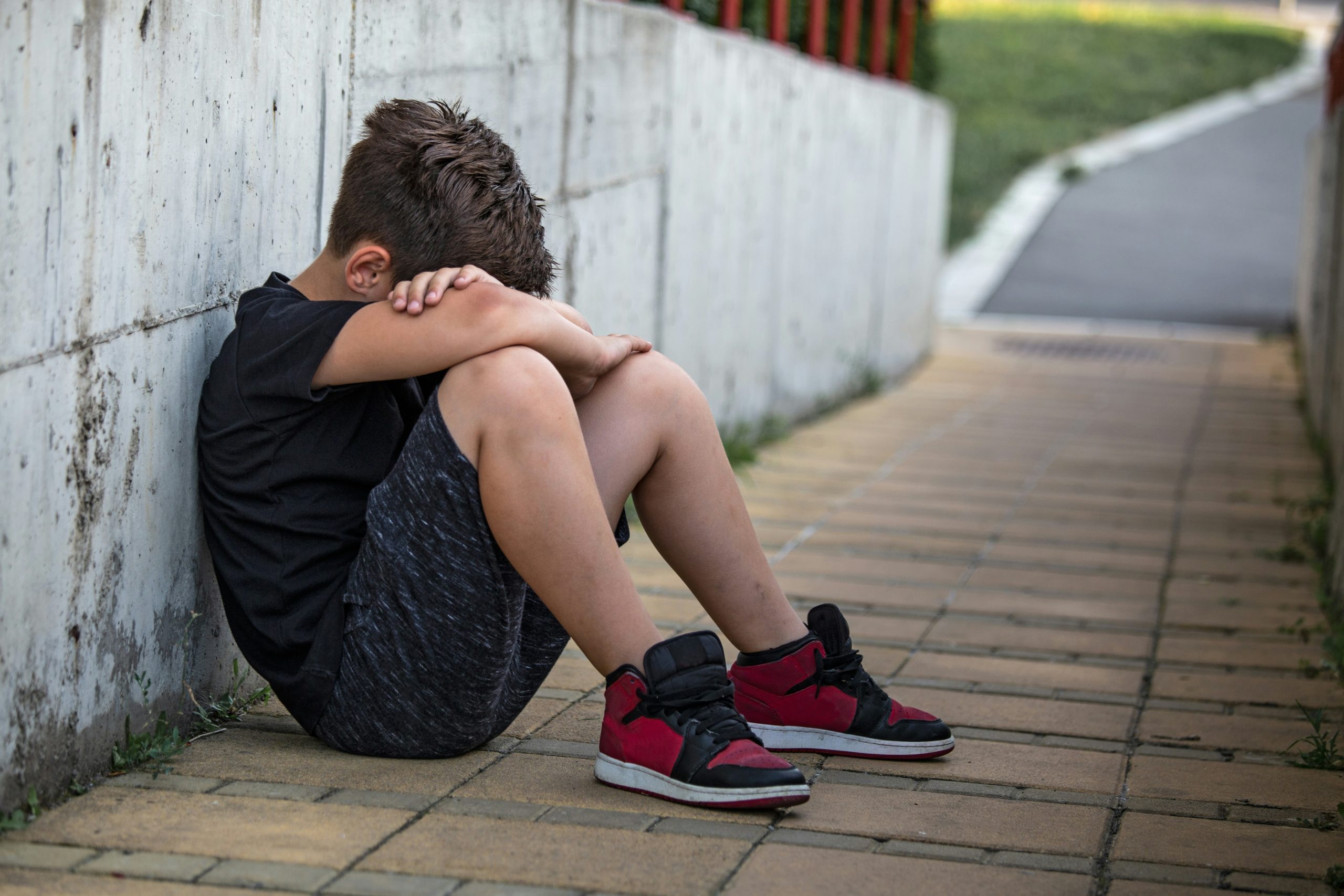Not every form of child abuse leaves a mark you can see. There are no bandages, no visible wounds, and sometimes not even a single tear. Yet, behind the quiet eyes of a neglected child, deep harm can unfold day after day. It doesn’t always come from physical violence or harsh words—but there are definite signs of child neglect that everyone should learn to recognize.
Identifying child neglect can be particularly challenging, as its signs are often subtle and easily overlooked. In many cases, neglect unfolds quietly over time, slowly undermining a child’s safety, stability, and sense of trust.
In this article, we’ll examine the signs of child neglect that every parent, teacher, or caregiver should recognize. Because the earlier neglect is identified, the sooner the child can be protected, supported, and given the care every child deserves.
Let’s begin with what child neglect really means—because understanding the term is the first step toward spotting it.
When Abuse Does Not Leave a Bruise
When most people think about child abuse, they picture active harm—someone striking, yelling, or otherwise inflicting pain. But neglect is different. It’s the harm caused when a child’s basic needs go consistently unmet.
It’s not an act of aggression, but rather a failure of responsibility.
From both a legal and practical perspective, child neglect happens when a caregiver consistently fails to meet a child’s basic needs—those that any reasonable adult would recognize as essential for safety and healthy development. This includes access to sufficient food, clothing, safe shelter, medical attention, supervision, and emotional support.
Neglect can also occur when a child is left in circumstances where serious physical or emotional harm is likely. For instance, imagine leaving a young child alone overnight with no intention of returning, or knowing a child is sick but choosing not to seek medical help. Child neglect is also when a child is allowed to remain in a home with ongoing violence, drugs, or dangerous individuals. Each of these actions—or inactions—places a child in a position they should never be in.
Neglect can also involve unrealistic expectations—for instance, putting a child in situations that demand judgment, strength, or awareness far beyond their age. When a caregiver’s inaction exposes a child to potential injury, trauma, or long-term harm, it becomes more than poor parenting—it becomes neglect.
Who Is Most Likely to Recognize Child Neglect (and Why)
Neglect rarely makes itself apparent. It can hide behind perfect attendance, polite manners, or practiced smiles. Often, the people who spend the most time around a child—seeing them in different settings—are the first to sense when something isn’t right. That awareness can make all the difference.
Teachers and School Staff:
Educators notice the quiet clues: constant fatigue, missed homework, or a child who seems withdrawn or hungry. They see patterns others might miss and are often the first to ask careful, compassionate questions.
Doctors and Healthcare Providers:
Pediatricians, nurses, and other healthcare professionals are often among the first to notice signs of neglect. They may observe untreated injuries, poor nutrition, or missed medical appointments, and their training allows them to connect these observations to potential risks. Their guidance helps families access care and support before problems escalate.
Other Parents and Caregivers:
Friends, babysitters, and fellow parents sometimes see what happens beyond the classroom or clinic. A child who is always alone, often hungry, or clearly unkempt can point to a deeper problem at home.
Coaches, Mentors, and Childcare Workers:
Adults in after-school programs or sports see children in unguarded moments. Emotional withdrawal, sudden absences, or visible stress can be signs of instability at home.
Family Members and Neighbors
Extended family and neighbors are often among the first to notice potential signs of neglect, such as children left alone, repeated distress, or unsafe living conditions. Intervening can feel difficult, but bringing these concerns to the proper authorities can be essential to protecting a child’s safety and overall well-being.
Signs That a Child May Be Experiencing Neglect
Recognizing neglect can be difficult because the signs are often subtle. They may appear behavioral, emotional, or physical—and sometimes all three. Paying attention to small patterns can make all the difference.
Lack of Supervision
When a child is often left alone or seen wandering unsupervised, it may signal more than simple independence. Extended periods without adult care can expose a child to danger and emotional distress—key indicators of neglect.
Chronic Absences or Long Hours at School
Sometimes children arrive at school very early, leave long after everyone else, or miss days frequently. These patterns can signal challenges at home, where the child may feel unsafe or unsettled and seek stability elsewhere.
Consistent Hunger or Poor Hygiene
A child who frequently appears unwashed, wears the same clothes repeatedly, or often asks others for food may not be having their basic needs met and could be a silent victim of child neglect. Ongoing hunger or neglected personal care can be important indicators of a home environment that isn’t providing consistent support.
Stealing or Hoarding Food
Children who take food from classmates or hide extra portions aren’t simply misbehaving—they’re trying to survive. This behavior often reflects a lack of consistent access to meals at home.
Extreme Behavior Shifts
Some children who are victims of child neglect show sudden changes in how they act—quiet and withdrawn at one moment, then irritable or demanding the next. These swings often reflect the instability or stress they experience at home.
Constant Fatigue
A child who appears consistently tired or falls asleep during the day may be facing challenges beyond just a late bedtime. It can be evidence of a stressful, unstable home environment—a home life unable to provide the care and rest the child needs.
Taking on Adult Responsibilities
When a child assumes the role of caretaker—watching younger siblings, managing chores, or worrying about bills—it’s often a sign that the household lacks appropriate adult guidance. This reversal of roles can place heavy emotional strain on a child.
Unsafe or Unsanitary Living Conditions
Homes that are excessively cluttered, poorly maintained, or missing necessities—such as heat, water, or electricity—can create unsafe conditions for children. Such environments often reflect ongoing neglect and a lack of consistent care.
Frequent Injuries Without Explanation
Repeated cuts, bruises, or burns—especially when a child cannot provide a clear or consistent explanation—may indicate a serious concern. Such patterns often reflect insufficient supervision or exposure to unsafe conditions within the home.
Substance Use
When a child begins using alcohol or drugs, it is often a way to manage stress, emotional distress, or difficult circumstances rather than mere misbehavior. Such patterns can reflect deeper issues within the home, including ongoing neglect or an unstable family environment.
Each sign alone might not confirm child neglect, but taken together, they paint a troubling picture. The key is paying attention to patterns over time—especially when a child’s physical condition, emotional state, or behavior seems persistently off.
When you notice these warning signs, the next step isn’t accusation—it’s awareness and action. That brings us to the most critical part of this conversation: what to do when you suspect neglect.
What You Can Do if You Suspect Child Neglect?
Recognizing neglect is only the first step; understanding how to respond is equally important. Many adults hesitate because they are worried about overstepping or misjudging the situation. Yet failing to act can allow harm to continue. When a child’s well-being or safety is at risk, taking appropriate action is far better than remaining silent.
Start by trusting your instincts. If a child seems consistently hungry, fearful, withdrawn, or unkempt—and your concern persists—it’s worth taking seriously. You don’t need proof. You need reasonable suspicion that a child’s needs are being ignored or that they’re in danger. Adults who work closely with children—such as teachers, doctors, and childcare providers—carry a duty to act when they suspect neglect. In most states, these “mandatory reporters” are required by law to alert child protective services or law enforcement whenever they have reasonable cause to believe a child is being harmed or left in unsafe conditions.
Even for those who aren’t legally required to report, anyone can make a call. Reports can often be made anonymously, and they allow trained professionals to investigate and ensure a child’s safety.
If you’re unsure where to turn, contact your local child protective services office or the National Child Abuse Hotline at 1-800-422-4453.
Call Nelson Law Group Today!!
Child neglect doesn’t always make headlines, but our team at Nelson Law Group, PC understands that unseen harm can be just as devastating as visible abuse. When a child’s needs go unmet, the damage can quietly shape their future—undermining their confidence, security, and emotional health. Over time, that pain can alter how a child learns, trusts, and relates to others. As a trusted family law firm, Nelson Law stands for children whose voices too often go unheard. Our goal is to help clients take action with compassion, discretion, and a clear understanding of how to protect a child’s best interests.
Give our knowledgeable staff at Nelson Law Group, PC, a call if you have any further questions. Our staff is always available. Give us a call today! For more information about Brett A. Nelson, click here.












